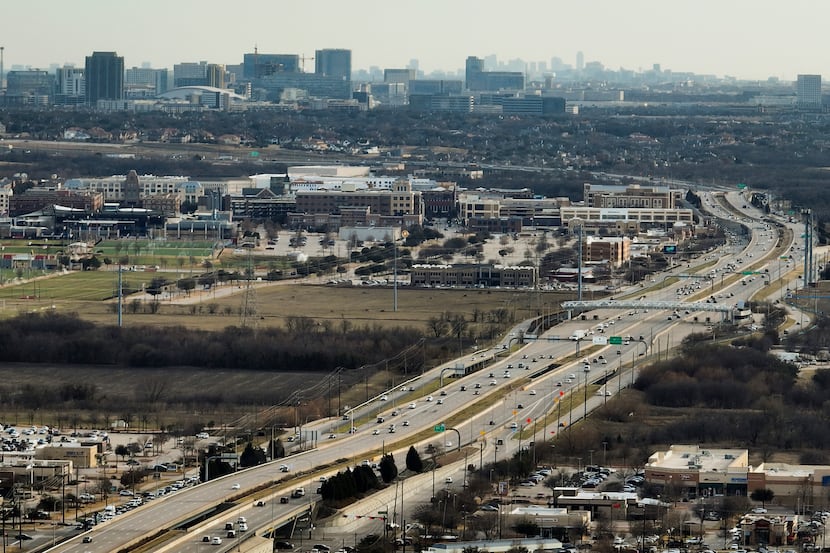In Frisco, men take home nearly $40,000 more than women. The gap grows even bigger for women over 25 with bachelor’s degrees, $66,000 less compared with their male counterparts.
The figure makes Frisco among one of the worst cities in the country for the pay disparity between men and women and one of 10 cities in North Texas where men earn more than women even when base education levels are accounted for, according to a new study from small-business website ChamberofCommerce.org, which evaluated the earnings of full-time, year-round workers from the U.S. Census Bureau’s American Community Survey.
Among North Texas cities, McKinney also has a pay gap greater than $25,000 and four cities, including Frisco, McKinney, Irving and Fort Worth have a $25,000 gender pay gap among full-time workers with four-year degrees.
Nationally, women make 18% less than their male counterparts, Census data shows, with men that work full time making $60,428 and women earning $49,263.
The median income of men living in Frisco who are college-educated and older than 25 is nearly $124,000. Frisco women of the same criteria bring in $57,389.
Collin Czarnecki, the lead researcher on the report, said the staggering pay gap among Frisco workers with advanced degrees can be explained in part by Frisco residents’ top industries and the pay discrepancies within those. Women in Frisco working in sales make $93,000 less than their male peers. In legal fields, there’s nearly a $73,000 gap, Czarnecki said.
For workers whose highest level of education is a high school diploma, the wage gap tends to be smaller as is the pay range, said Jasmine Tucker, director of research for the National Women’s Law Center. That changes with advanced degrees, she said.
“All of a sudden we’re talking about $75,000 versus $100,000, or even bigger,” Tucker said. “The ranges get bigger when we’re talking about more well-compensated roles.”
Texas ranks 29th in the country for income disparities, with the median difference in earnings between men and women at $10,707, just below the national average of $11,165.
“It paints a snapshot of the story across the whole country,” Czarnecki said. “It really boils down to how pay disparity varies whether it’s state to state or within a region.”
McKinney ranks fifth among all workers and sixth among workers with bachelor’s degrees. The median income for women in McKinney is $62,131,about $41,000 less than their male counterparts. Plano has the 12th largest pay gap among workers, with women earning $60,000, a quarter less than their peers.
Irving ranks 32nd among those with advanced degrees with a gender pay gap of more than $25,000.
“There’s clearly a lot of work to be done,” Czarnecki said. “Not only in Texas, but across the country.”
Full-time year-round working women earn about 82% of what their male counterparts earn. It’s a figure that’s remained stagnant over the last two decades. In 2002, women earned 80% as much as men.
The wage gap usually shrinks among women ages 25 to 34, working full time or part time, according to Pew Research Center, with female workers earning 92 cents on average for every dollar earned by a man in the same age group.
The pay gap is often explained by factors like the level of education attained, work experience, occupational segregation, and when one demographic is overrepresented or underrepresented in a certain industry.
Experts: Pay transparency is critical for change
Over the last four decades, women have outpaced men in earning college degrees, but the pay gap hasn’t closed. In 1982, a fifth of employed women had a college-level degree, compared with 26% of men. By 2022, 48% of working women had a bachelor’s degree, compared with 41% of men, according to Pew Research.
Tucker said there are some well-known steps that could be taken to work toward ameliorating these discrepancies.Private companies could perform pay audits, enact policies across legislative levels and have workers unionize, Tucker said.
The March Racial and Gender Pay Scorecard from Arjuna Capital and Proxy Impact ranks 68 major U.S. companies on their transparency in disclosing quantitative data on adjusted or median gender and racial pay gaps.
“More and more companies are publishing comprehensive pay gap data,” Natasha Lamb, managing partner of investment management firm Arjuna Capital, stated in the report. “Their leadership is essential to move the needle on pay equity.”
Target received the first perfect score, with Starbucks close behind, as both companies report all racial and gender pay equity on both an adjusted and unadjusted median basis for all of their employees, assessing total compensation, including base pay, bonuses and equity.
“Women and people of color are almost always deeply underrepresented in higher paying positions,” said Michael Passoff, CEO of Proxy Impact, a shareholder advocacy firm. “Median pay gap data sheds a light on that problem, and studies show that companies that disclose pay gaps are more likely to fix them.”
Two Dallas-based companies fared poorly for not disclosing pay equity data. AT&T received an F score and Texas Instruments, a D.
In Texas, men’s wages were more than $10,000 higher than women, with the median earnings totaling $51,000.
While Texas lawmakers hesitate to discuss pay transparency legislation, Kanarys founder Mandy Price said as Texas employers compete for talent, they’ll eventually feel the pressure to disclose pay ranges regardless of regulations.
“It’s going to have an organic ripple effect that we’re going to start to see throughout the nation,” Price said in January.
Transparency laws are one of the many ways to begin addressing systemic inequities, Tucker said. “We just haven’t done enough.”

